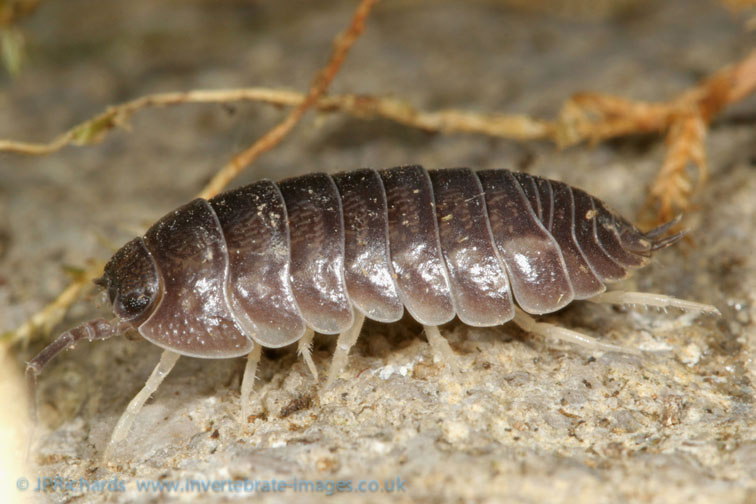Cylisticus convexus (De Geer, 1778)
Status:
GB IUCN status: Least Concern
ID Difficulty
Identification
When provoked Cylisticus convexus can roll into a flattened ball, but its antennae and long pointed uropods remain protruding. This latter feature and its five pairs of pleopodal lungs readily differentiates it from Armadillidium spp. and Eluma caelata (which have truncated 'square' uropods and two pairs of pleopodal lungs).
It is apparent that on several occasions this species has been mis-identified as Porcellio laevis (a species unable to roll into a ball and with two pairs of 'lungs').
Distribution
Cylisticus convexus is widely, but patchily, distributed throughout Britain and Ireland.
Habitat
It is equally at home in sparsely vegetated semi-natural coastal habitats and synanthropic sites inland. Coastal habitats include ‘soft’ cliffs, unstable screes, shingle beaches, erosion banks and salt marshes. Inland it colonises railway sidings and embankments, disused quarries, colliery spoil, farmyards, urban waste ground, rubbish tips, churchyards and gardens.
It is typically found beneath stones, dead wood and among strandline material and other debris.
This summary is based on the detailed account in Gregory (2009).
References
Gregory, S. (2009) Woodlice and Waterlice (Isopoda: Oniscidea & Asellota) in Britain and Ireland. Field Studies Council/Centre for Ecology & Hydrology.
Links
World List of Marine, Freshwater and Terrestrial Isopod Crustaceans: https://www.marinespecies.org/isopoda/aphia.php?p=taxdetails&id=260073










